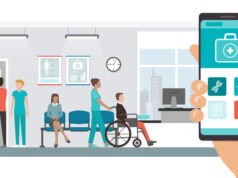
Venture capital dollars are pouring into digital health companies. Every week, the news cycle is filled with new funding rounds for a diverse portfolio of new healthcare services and technologies. The pandemic has accelerated innovation, from telemedicine to remote patient monitoring to behavioral health.
The funding community and entrepreneurs are excited about what the future holds for digital health—with good reason.
Rock Health reports that digital health companies raised a collective $21.3 billion in venture capital from investors through Q3 of 2021. That is more than double the $10.2 billion raised through Q3 of 2020. This innovation has improved care access during a global pandemic and driven forward-thinking innovation regarding technology in healthcare.
Meanwhile, as the pandemic has amplified conversations about health equity, disparities exist even when it comes to where VCs have focused their investments. While money has poured into newly lucrative areas tied to telemedicine, mental health and Medicare Advantage, Medicaid patients have been left behind.
Medicaid acts as the public health insurance provider in the U.S. for people with low income. According to the Centers for Medicare and Medicaid Services (CMS), Medicaid covers 1 in 5 Americans and accounts for approximately 1 in 6 U.S. healthcare dollars spent ($662 billion in 2020). Many of these patients have complex and costly healthcare needs.
Despite the progress we have made when it comes to technology supporting access to healthcare and better care, there are fundamentally large groups of people who still are not getting their medical needs met.
More needs, fewer resources
Traditionally, care for Medicaid populations has a low return on investment, which is why the private sector has often ignored these patients. Reimbursement rates are always lower than alternatives and these rates are constantly changing (usually on a state-by-state basis). While reimbursement rates are lower, Medicaid populations often have just as complex healthcare needs as others, with fewer resources for out-of-pocket expenses.
Additionally, patients often move in and out of Medicaid eligibility, making it challenging to build trusted relationships with healthcare providers. This can make it harder to ensure patient engagement, medication adherence, continuity of care and ultimately quality —many of the factors tied to success in value-based payments. Not to mention, the social determinants of health (SDoH) at play within Medicaid populations can make health access and equity even more challenging. Patient communication is one of the biggest challenges in filling in care gaps, which are often unmet due to difficult socioeconomic conditions.
Even CMS sees the alignment and need for innovation to support Medicaid populations. The agency’s most recent strategic direction notes the need for accountable care, health equity, and improving access and affordability. These are all factors that the VC community has the resources to support and tackle.
CMS states it is willing and eager to work with healthcare disruptors on payer-provider alignment, clinical tools, better outcome measures, and technology approaches to improve capacity to transform healthcare.
With innovation, all things are possible
Historically, healthcare services simply did not scale. As both a physician and computer scientist, I have made it my mission to help develop and introduce digital health solutions to the masses. We need to invest in teams and technology that build solutions to help large populations that need it most. VC firms can help get the ball rolling, by investing where the tech is able to serve and grow.
Take telemedicine for example. It has been around for decades, but because of the pandemic, healthcare organizations reduced barriers to use—and providers finally are taking care of people at a distance in mass numbers.
There has also been a misperception that technology is not accessible for underserved populations. Pew Research has found that access to mobile phones, including smartphones, is no longer a barrier to innovation. Nearly 90% of Americans have access to public wifi and a mobile phone. Additionally, smartphone ownership is at an all-time high, even among people with few socioeconomic resources.
Today, digital health startups can reach these patients with technology-first solutions to address healthcare needs. While historically costs were prohibitive to reach large Medicaid populations, with scalable software solutions, we can easily expand to an entire patient population in need.
It’s just good business
As an industry, we cannot ignore the larger needs of our healthcare system. Taking care of those who have been overlooked is simply good business. This is where physician-led firms can lead the charge by understanding the complex risk and care needs associated with vulnerable and underserved populations and investing in technology solutions that help close care gaps.
Admittedly, Medicaid is not the market most entrepreneurs think about when starting a company for the first time, which is why it is even more critical for VCs to support these initiatives. Helping advance innovation in underserved populations is not a charity project, it is a need and opportunity from a dollars and cents perspective. We have the tech to make things better—and we should make them better for everyone.
If we want to leave a healthcare system better than we found it, it will take VC firms investing in technology that reach all and serve all. While in some ways we have made lightyears of progress, we still have more work to do to reach those that need care and the output of technology the most.
VC firms need to stop being the silent partner and get out in front of making healthcare more equitable, affordable and accessible.
Photo: phive2015, Getty Images








